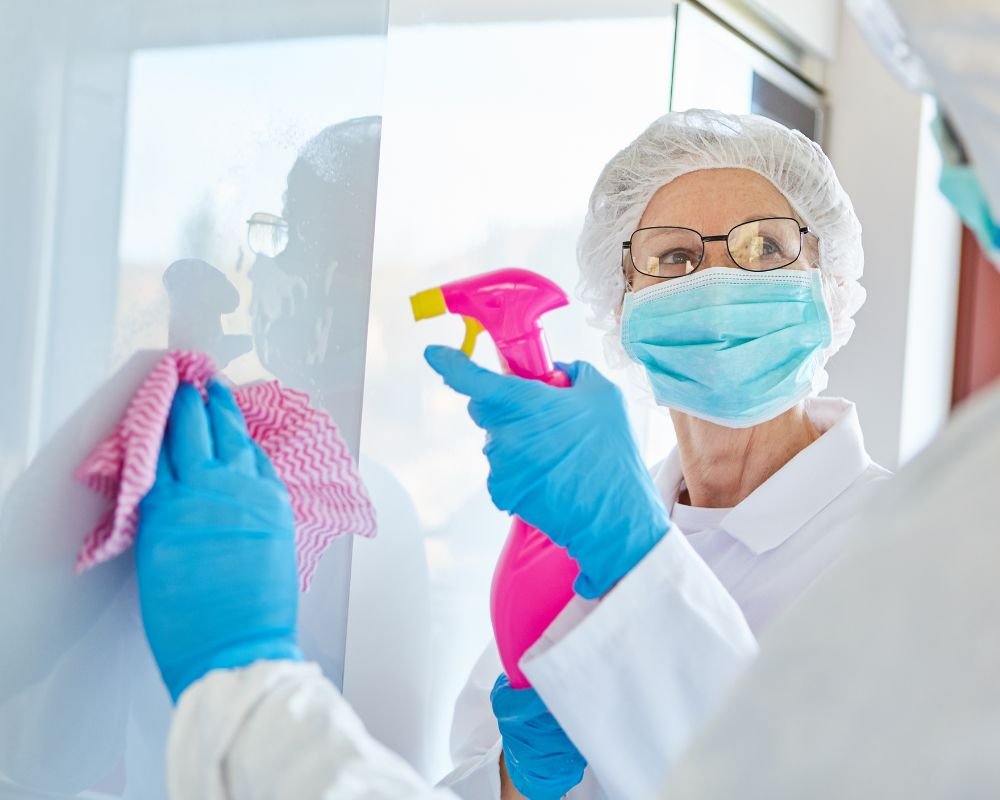With winter now at the doorstep, primary care offices are gearing up for the busy season. Likewise for family practices, private practices specializing in geriatrics, and even pediatric offices. It is important for all medical facilities to be extra vigilant about cleaning at a time of year when germs seem to spread like wildfire.
Every medical facility is different to some extent. But cleaning medical facilities is pretty consistent from one environment to the next. To illustrate the point, let us take a look at four key areas of concern in non-hospital and nursing home environments.
Key Area #1: Restrooms
Restrooms are a top priority in any business cleaning scenario. They are typically the most risky environments in terms of germs and bacteria. In a medical setting, however, the risk is exacerbated by people who might already be sick when arriving for a visit. It is essential to give restrooms extra attention during the busy cold and flu season.
Note that this applies to both public restrooms and those used exclusively by medical staff. Staff bathrooms are just as susceptible to a higher incidence of contamination. Perhaps even more so, given the fact that medical staff interact with numerous patients throughout the day.
Key Area #2: Exam Rooms
Next up are a medical facility’s exam rooms. Because exam rooms are used by multiple patients per day, there is always the risk of spreading germs from one to the next if proper cleaning techniques are not implemented. Exam rooms need basic cleaning between patients along with more extensive cleaning after hours.
Key Area #3: Staff-Only Areas
The third key area of concern are those staff-only areas found in typical medical offices. They include break rooms, kitchens, and conference rooms. Staff members, already susceptible to germ exposure via working with sick patients, can carry germs with them into common areas. Therefore, cleanliness is paramount.
Key Area #4: Publicly Accessible Areas
Hand-in-hand with staff-only areas are publicly accessible areas. Although the mind immediately thinks of waiting rooms, and they do apply here, publicly accessible areas also include lobbies, staircases, hallways, etc. Any area potentially sick patients have access to is an area of concern during cold and flu season. Such areas need to be cleaned with the same diligence crews would apply to exam rooms and restrooms.
Both Cleanliness and Hygiene
It is important to point out that medical facility cleaning is about more than dust and dirt. You absolutely want to do things like vacuum carpets, empty trash cans, clean windows, and wipe down countertops. But medical facility cleaning is also an exercise in sanitation and hygiene.
A basic level of cleaning seeks to eliminate dirt and debris. It is designed to improve the aesthetics of the space in question. After all, who wants to walk into a medical facility and see dirty floors and dusty furniture? Basic surface cleaning is a necessity.
Above and beyond that, medical facilities require a level of cleaning that guarantees a hygienic and sanitary environment for all patients and staff. Doing it properly requires a combination of knowledge, skill, and the right cleaning supplies and equipment.
It’s Okay to Outsource
To wrap all of this up, we would like to point out that it is okay to outsource medical facility cleaning. In fact, outsourcing to a commercial cleaning provider that specializes in medical facilities is the best way to go. Let medical staff concentrate on patients and their needs. Meanwhile, experienced cleaning crews that know what it takes to maintain a hygienic and sanitary environment can do what they do best. It’s especially important this time of year.


